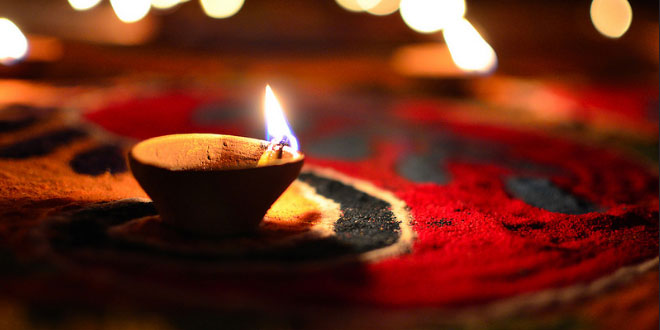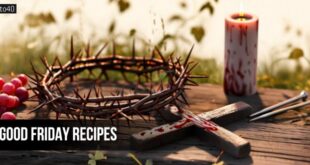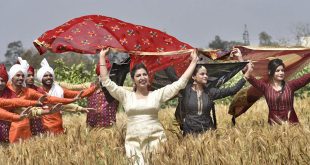Chhoti Diwali: Diwali is a festival, which brings a series of festivals with it. One after another we get a chance to celebrate five festivals together. Narak Chaturdashi is one of these festivals and it is celebrated on the second day of Diwali celebrations, just one day before the actual Diwali celebrations. The Narak Chaturdashi, falls on the fourteenth day of the Hindi month, Kartik is more popular by the name of Chhoti Diwali. It is celebrated with same zeal and enthusiasm as the main Diwali but it is on comparatively lower scale. Just like Diwali people light diyas on Chhoti Diwali to fill their homes with light and worship Goddess Lakshmi.
Chhoti Diwali: Legends
One famous story behind the celebrations of Chhoti Diwali or Narak Chaturdashi is about the demon king Narakasur who was ruler of Pragjyotishpur, a province to the South of Nepal. During a war, he defeated Lord Indra and snatched away the magnificent earrings of Mother Goddess Aditi who was not only the ruler of Suraloka but also a relative of Lord Krishna’s wife, Satyabhama. Narakasur also imprisoned sixteen thousand daughters of Gods and saints in his harem.
When Satyabhama came to know about this malevolent act of Narakasur she got furious and she prayed to Lord Krishna to empower her so that she could destroy Narakasur. The legend also tells that Narakasur was under a curse that a woman would kill him. So, Lord Krishna empowered Satyabhama to fight with Narakasur and himself became the charioteer of her ‘Ratha’ in the battlefield. Thus, by the grace of Lord Krishna Satyabhama beheaded Narakasur on a day before to Narak Chaturdashi and released the imprisoned ladies from Narakasur’s harem and also recovered the precious earrings of Mother Goddess Aditi.
In order to save all those imprisoned ladies from embarrassment Lord Krishna accepted them all as his wives. As a symbol of the victory over Narakasura, Lord Krishna smeared his forehead with this demon king’s blood. Then Lord Krishna returned home with his new wives early morning of the Narak Chaturdashi day. The womenfolk massaged scented oil to his body and gave him a good bath to wash away the filth from his body. Since then, there is a custom to take bath before sunrise on the day of Narak Chaturdashi, especially in the state of Maharashtra. It is said that the mother of the Narakasura, Bhoodevi, declared that the death of her son should not be a day of mourning but an occasion for celebrations. Since then people celebrate Chhoti Diwali with joy and fun every year.
Another legend is about King Bali, who was king of the nether world. His power and increasing influence posed a threat to the security of all ‘Devatas’ so they prayed Lord Vishnu to help them out. To help Devatas and to curb King Bali’s powers Lord Vishnu went to King Bali in the guise of a short-height ‘Brahmin’, who is known as incarnation of ‘Batu Waman’, and begged to give him only that much area of land that he could cover with in three steps because King Bali was well known for his philanthropy. King Bali saw just a short-height ‘Brahmin’ asking for a little piece of land so he proudly granted him his wish.
That very moment that short-height ‘Brahmin’ disappeared and there was almighty Lord Vishnu in place of him. In his first step, Lord Vishnu covered the heaven and in the second step the earth and asked King Bali where to put his third step. Then King Bali offered his head to Lord Vishnu. Lord Vishnu put his third step on his head and pushed him deep into the underground. But at the same time being impressed by his generosity Lord Vishnu gave King Bali the lamp of knowledge and allowed him to return to earth once a year to light millions of lamps.
Narak Chaturdashi Celebrations
People wake up early in the morning break any bitter fruit and apply the kumkum-oil paste, which is called ‘Ubtan’, on their foreheads and then take bath. The breaking of the fruit represents the head of the demon King, Narakasur and the kumkum-oil paste symbolizes the blood that Lord Krishna smeared on his forehead. In the state of Maharashtra, people take the traditional early baths after applying the paste of gram flour, fragrant powders and oil on their foreheads. As long as the ritual of bath takes place, deafening sound of crackers and fireworks could be heard so that the children enjoy bathing. At dusk, people start lighting Diyas and candles in and around their house to mark the celebration of Chhoti Diwali.
 Kids Portal For Parents India Kids Network
Kids Portal For Parents India Kids Network







